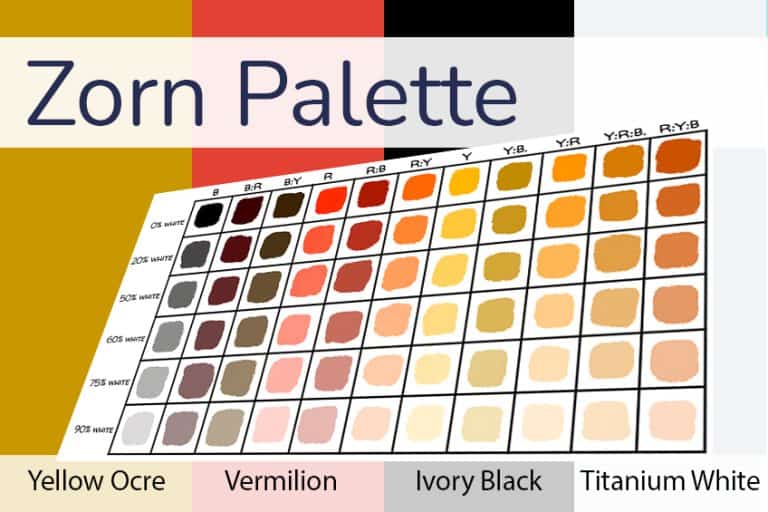What Is the Blackest Black in the World – Vantablack and More
The quest for the blackest black has led to groundbreaking developments like Vantablack, which absorbs 99.965% of visible light, and an even darker material from MIT researchers. These advances in material science have broad implications, from art to technology, challenging our perceptions of color and light absorption. Learn everything about Vantablack and what is the actual blackest black that exists.
Key Takeaways
- Vantablack was renowned as the blackest black, until a recent material developed by MIT researchers surpassed its light-absorption levels.
- Advances in the field have led to blacks that absorb over 99% of light, creating the appearance of an almost total void.
- These materials have expanded beyond aesthetics, serving practical functions in artistic, scientific, and technological contexts.

Is Vantablack the Blackest Black in the World?
When you hear about Vantablack, you might imagine an abyss of color; after all, it famously holds the title of one of the darkest materials ever created. Developed by Surrey NanoSystems in 2014, Vantablack is not a paint but a coating. It’s composed of a multitude of carbon nanotubes, each one 10,000 times thinner than a human hair. This structure enables it to absorb up to 99.96% of visible light. However, despite its reputation, Vantablack is not the absolute blackest material in existence. To put this into perspective, here’s a comparison:
| Material | Absorption Rate of Visible Light |
|---|---|
| Vantablack | 99.96% |
| MIT Blackest Black | 99.995% |
As indicated in the table, researchers at MIT have engineered a material that surpasses the darkness of Vantablack. The material, created by MIT engineers, absorbs 99.995% of visible light, making it notably blacker than Vantablack. The measure of blackness, in this case, is the material’s ability to absorb light across the visible spectrum. This translates to how much light is reflected versus how much is absorbed and converted to heat. While Vantablack is exceptionally non-reflective and non-scattering, the blackest black accolade has been claimed by the MIT creation. Your comprehension of the “blackest black” should be understood with nuance. While Vantablack was once the champion of darkness, it has been outperformed by an even darker material.
Thus, Vantablack is no longer the blackest black in the world.
Discovery and Development of Blackest Blacks
Your journey into the realm of the darkest materials begins with a revolutionary substance called Vantablack and progresses to even more advanced nanomaterials. You’ll uncover their unique properties and transformative potential in a range of applications.

Creation of Vantablack
Vantablack, the first major breakthrough in creating the blackest black, was developed by Surrey Nanosystems in 2014. It is composed of carbon nanotubes and can absorb up to 99.965% of visible light. The structure of Vantablack is such that light enters the space between the nanotubes and is effectively trapped, leading to an unparalleled dark hue.
This material both revolutionized the way you think about color and created potential for new applications in the fields of astrophysics and stealth technology due to its light-absorbing properties.
Advances Beyond Vantablack
The quest for the blackest black didn’t stop with Vantablack. The Massachusetts Institute of Technology (MIT) introduced a material that outdid Vantablack’s light absorption. This new development captures over 99.995% of incoming light, making it the current title holder for the blackest black. The use of nanotechnology has been pivotal in this discovery, with enhanced properties resulting in greater light absorption than ever before.

Additionally, further advancements in ultra-black coatings have led to the creation of products like Black 2.0 and Black 3.0, which are accessible to artists and the general public. These materials, while not as dark as some of the nanotube-based materials, have been engineered to reflect minimal light and offer a viable alternative to Vantablack for artistic use. Singularity Black is another competitor in the space, offering different applications and advantages in terms of handling and usage. With each iterative innovation, you gain a greater understanding of how controlling light at the nanoscale can lead to a variety of functional and aesthetic applications.
Can you Buy Vantablack Paint?
Vantablack is not a paint in the traditional sense; it’s a complex material made up of carbon nanotubes. These nanotubes are capable of absorbing 99.8% of ultraviolet, visible, and infrared light, allowing Vantablack to create a disorienting depthless effect. Initially, Vantablack was not available for purchase by the general public. It was developed primarily for aerospace and scientific applications.
However, in its ongoing development, a version called Vantablack S-VIS requires strict procedures and expertise to apply and is available for purchase, though typically used by artists or researchers with approval from Surrey NanoSystems.
For broader accessibility, Stuart Semple created Black 3.0, an alternative to Vantablack. This ultra-black paint is designed to be used by anyone without the same restrictions and complexities associated with Vantablack. While not quite as absorbent, it is still remarkably dark and can be purchased online. Here’s a quick comparison to illustrate your options:
| Material | Light Absorption | Publicly Available | User-friendly |
|---|---|---|---|
| Vantablack | 99.8% | No (S-VIS with permission) | No |
| Black 3.0 | Very high | Yes | Yes |
You will not find Vantablack in your local art supply store, but you can explore alternatives such as Black 3.0 if you need an ultra-black paint for artistic applications. Keep in mind the unique requirements for applying materials like Vantablack, which extend beyond just painting it onto a surface.
Applications in Science and Technology
The development of materials that can absorb nearly all visible light has significant implications in various scientific and technological fields. You’ll see that these materials are particularly valuable in areas where controlling light and heat is essential.

Space Exploration
In space exploration, the application of the blackest black materials provides an advantage in managing stray light and heat, crucial for the performance of space telescopes and sensors. NASA utilizes light-absorbing materials to reduce reflections and interference, enhancing the quality of astronomical data.
These coatings can also help in thermal management, an essential aspect for spacecraft and satellites, by minimizing the heat absorbed from sunlight and thereby protecting sensitive instruments.
Artistic and Commercial Use
Though not directly scientific, the artistic and commercial use of these materials can influence the visual and practical aspects of technological products. For instance, coatings such as the blackest black can be used to create a striking visual effect on products, minimizing glare and reflection. This has implications for the aesthetics of various devices, as well as practical applications in reducing light pollution in commercial signage and displays.

Optical and Scientific Instruments
The blackest black coatings are invaluable when you are dealing with optical instruments. For aeronautics and astronautics applications, the ability to absorb light and reduce scattering improves the accuracy of various sensors and instruments. In scientific environments, these materials mitigate stray light, enhancing the performance of optical systems.
High precision is crucial, and with these coatings, your devices can achieve better sensitivity and measurement accuracy.
Conclusion
Material advancements, particularly in the realm of color and light absorption, have led to the creation of a substance that stands out for its minimal reflectance. Massachusetts Institute of Technology (MIT) engineers have developed a material that holds the title for the blackest black known to date. This material, significantly darker than Vantablack, is designed to absorb over 99.9% of visible light. The practical applications for such a material are broad, particularly in aerospace, where reducing glare can be crucial for both instruments and observers.

As you consider the implications of this ultra-black material, keep in mind the potential it has in enhancing optical systems. It could be pivotal in reducing stray light, improving the accuracy of sensitive telescopes, and aiding in the observation of celestial bodies. The collaboration between scientists and engineers in refining these materials reflects a dedication to pushing the boundaries of what is possible.
The strive towards creating even darker materials continues, aiming to contribute to both scientific advancements and practical applications. Remember, the journey toward achieving the blackest black is not just a quest for the sake of novelty but a pursuit that could yield substantial benefits in technology and exploration.
Frequently Asked Questions
What Defines the Blackest Black, and How Is It Measured?
The blackest black is defined by its ability to absorb light across the visible spectrum, leaving almost no reflection. It is measured using a parameter known as total hemispherical reflectance or THz, which quantifies the amount of light reflected by a material across all angles and wavelengths. The lower the THz value, the blacker the material. Materials like Vantablack and Musou Black are renowned for their incredibly low THz values, making them among the darkest substances known to humanity.
How Do Artists and Designers Utilize the Blackest Black in Their Work?
Artists and designers often employ the blackest black to create striking contrasts and enhance visual depth in their compositions. The use of ultra-black pigments can intensify shadows, highlight focal points, and evoke a sense of mystery or depth in artwork, architecture, fashion, and product design. However, due to the exclusivity and expense of materials like Vantablack, alternative pigments such as Musou Black have emerged to offer similar visual effects while being more accessible to a wider range of creators.
In 2005, Charlene completed her Wellness Diplomas in Therapeutic Aromatherapy and Reflexology from the International School of Reflexology and Meridian Therapy. She worked for a company offering corporate wellness programs for a couple of years, before opening up her own therapy practice. It was in 2015 that a friend, who was a digital marketer, asked her to join her company as a content creator, and this is where she found her excitement for writing.
Since joining the content writing world, she has gained a lot of experience over the years writing on a diverse selection of topics, from beauty, health, wellness, travel, and more. Due to various circumstances, she had to close her therapy practice and is now a full-time freelance writer. Being a creative person, she could not pass up the opportunity to contribute to the Art in Context team, where is was in her element, writing about a variety of art and craft topics. Contributing articles for over three years now, her knowledge in this area has grown, and she has gotten to explore her creativity and improve her research and writing skills.
Charlene Lewis has been working for artincontext.org since the relaunch in 2020. She is an experienced writer and mainly focuses on the topics of color theory, painting and drawing.
Learn more about Charlene Lewis and the Art in Context Team.
Cite this Article
Charlene, Lewis, “What Is the Blackest Black in the World – Vantablack and More.” Art in Context. February 8, 2024. URL: https://artincontext.org/what-is-the-blackest-black-in-the-world/
Lewis, C. (2024, 8 February). What Is the Blackest Black in the World – Vantablack and More. Art in Context. https://artincontext.org/what-is-the-blackest-black-in-the-world/
Lewis, Charlene. “What Is the Blackest Black in the World – Vantablack and More.” Art in Context, February 8, 2024. https://artincontext.org/what-is-the-blackest-black-in-the-world/.









